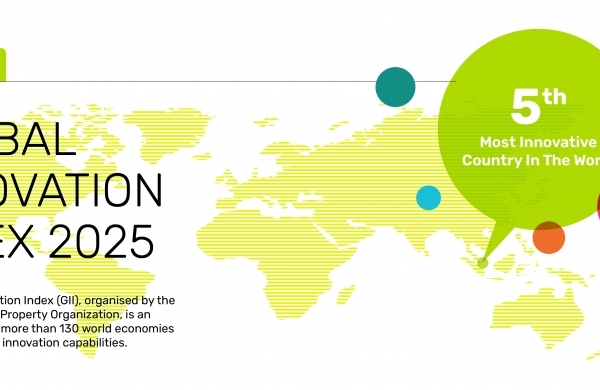Did not receive verification mail? Please confirm whether the mailbox is correct or not Re send mail

Vapor
- 2021-09-22 13:38:54
WIPO China:China Ranks 12th in the World in GII 2021, Up 2 Places
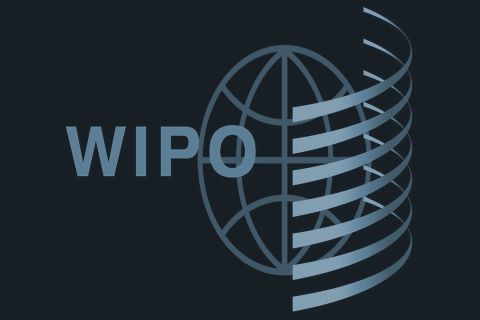
The Global Innovation Index 2021 (GII) has been released by the World Intellectual Property Organization (WIPO) in Geneva. China continues its progress made last year and ranks 12th in the world.
Click here to download the report
According to the GII, Governments and enterprises in many parts of the world scaled up investments in innovation amid the massive human and economic toll of the COVID-19 pandemic, the Global Innovation Index 2021 showed, illustrating a growing acknowledgement that new ideas are critical for overcoming the pandemic and for ensuring post-pandemic economic growth.
Scientific output, expenditures in research and development (R&D), intellectual property filings and venture capital (VC) deals continued to grow in 2020, building on strong pre-crisis performance. Notably, R&D expenditures showed greater resilience during the pandemic-linked economic downturn than in previous slumps.
However, the impact of the crisis has been highly uneven across industries, according to a new GII feature, the Global Innovation Tracker. Firms with outputs including software, internet and communications technologies, hardware and electrical equipment industry and pharmaceuticals and biotechnology amplified their investments in innovation and increased their R&D efforts. In contrast, firms in sectors heavily hit by the pandemic’s containment measures and whose business models rely on in-person activities – such as transport and travel – cut back their outlays, the tracker showed. The GII 2021 shows that technological progress at the frontier holds substantial promise, with the rapid development of COVID-19 vaccines being the greatest example.
Mr, Deng hongseng said:"This year’s Global Innovation Index shows us that in spite of the massive impact of the COVID-19 pandemic on lives and livelihoods, many sectors have shown remarkable resilience – especially those that have embraced digitalization, technology and innovation. As the world looks to rebuild from the pandemic, we know that innovation is integral to overcoming the common challenges that we face and to constructing a better future. The Global Innovation Index is a unique tool to guide policy-makers and businesses in charting plans to ensure that we emerge stronger from the pandemic."
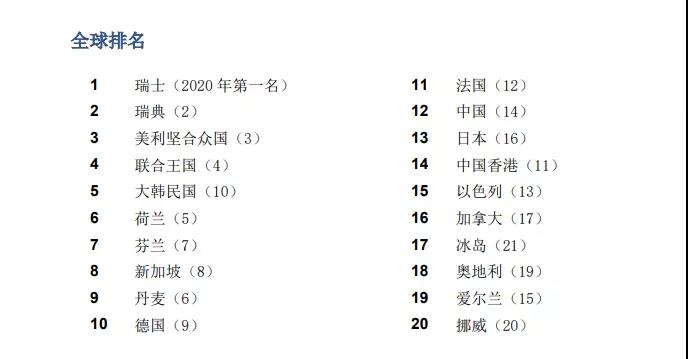
This year’s Global Innovation Index shows us that in spite of the massive impact of the COVID-19 pandemic on lives and livelihoods, many sectors have shown remarkable resilience – especially those that have embraced digIn its annual ranking of the world’s economies on innovation capacity and output, the GII shows that only a few economies, mostly high income, consistently dominate the ranks. However, selected middle income economies, including China, Turkey, Viet Nam, India, the Philippines, are catching up and changing the innovation landscape.
Switzerland, Sweden, U.S., and U.K. continue to lead the innovation ranking, and have all ranked in the top 5 in the past three years. The Republic of Korea joins the top 5 of the GII for the first time in 2021, while four other Asian economies feature in the top 15: Singapore (8), China (12), Japan (13) and Hong Kong, China (14).
The geography of global innovation changes unevenly
Northern America and Europe continue to lead the global innovation landscape as regions by far. The innovation performance of South East Asia, East Asia, and Oceania has been the most dynamic in the past decade. It is the only region closing the gap with the leaders.
China is still the only middle-income economy that makes it to the top 30. Since 2013, China has moved steadily up the GII ranking, establishing itself as a global innovation leader while approaching the top 10. It boasts 19 of the top science and technology clusters worldwide - with Shenzhen-Hong Kong-Guangzhou and Beijing in the 2nd and 3rd spots, respectively.
Bulgaria (35), Malaysia (36), Turkey (41), Thailand (43), Viet Nam (44), the Russian Federation (45), India (46), Ukraine (49), and Montenegro (50) make it to the GII top 50. However, only Turkey, Viet Nam, India and the Philippines, are systematically catching up. Beyond China, these larger economies have the potential to change the global innovation landscape for good.
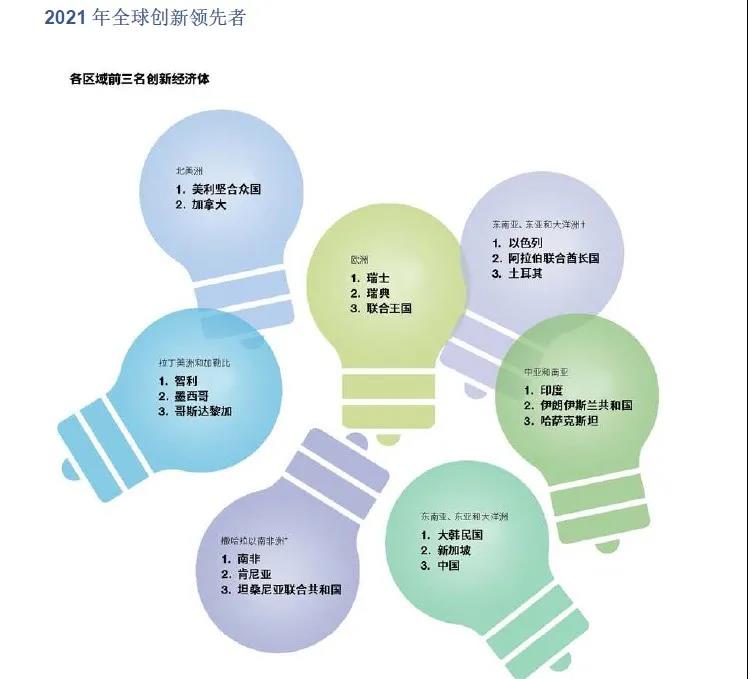
“The GII shows that although emerging economies often find it challenging to steadily improve their innovation systems, a few middle-income economies have managed to catch up in innovation with their more developed peers", says Former Dean and Professor of Management at Cornell University, Soumitra Dutta. “These emerging economies, among other things, have been able to successfully complement their domestic innovation with international technology transfer, develop technologically dynamic services that can be traded internationally, and ultimately have shaped more balanced innovation systems”.
New findings from the 2021 GII study
① Investments in innovation reached an all-time high before the pandemic with R&D growing at an exceptional rate of 8.5 percent in 2019.
② Government budget allocations for the top R&D spending economies, for which data is available, showed continued growth in 2020. The top global corporate R&D spenders increased their R&D expenditures by around 10 percent in 2020, with 60 percent of these R&D-intensive firms reporting an increase.
③ The number VC deals grew by 5.8 percent in 2020, exceeding the average growth rate of the past 10 years. Strong growth in the Asia Pacific region more than compensated for declines in North America and Europe. Africa and Latin America and the Caribbean also registered double digit increases. First quarter figures for 2021 suggest even more vibrant VC activity in 2021.
④ The publication of scientific articles worldwide grew by 7.6 percent in 2020.
“Among the key findings of GII 2021, changes happening among the top economies are quite remarkable. In addition to Republic of Korea’s spectacular jump (from 10th to 5th), the continuation of progress made last year by France (11) and China (12) are confirmed, as both are now knocking at the door of the GII top 10. Those three examples underline the continued importance of governmental policies and incentives to stimulate innovation. Altogether, COVID did not disrupt the trends identified in 2019-2020, as financing (public and private) continued to remain relatively abundant for innovative firms, even outside the health and bio-sciences fields,” says INSEAD Executive Director for Global Indices Bruno Lanvin.
About the Global Innovation Index
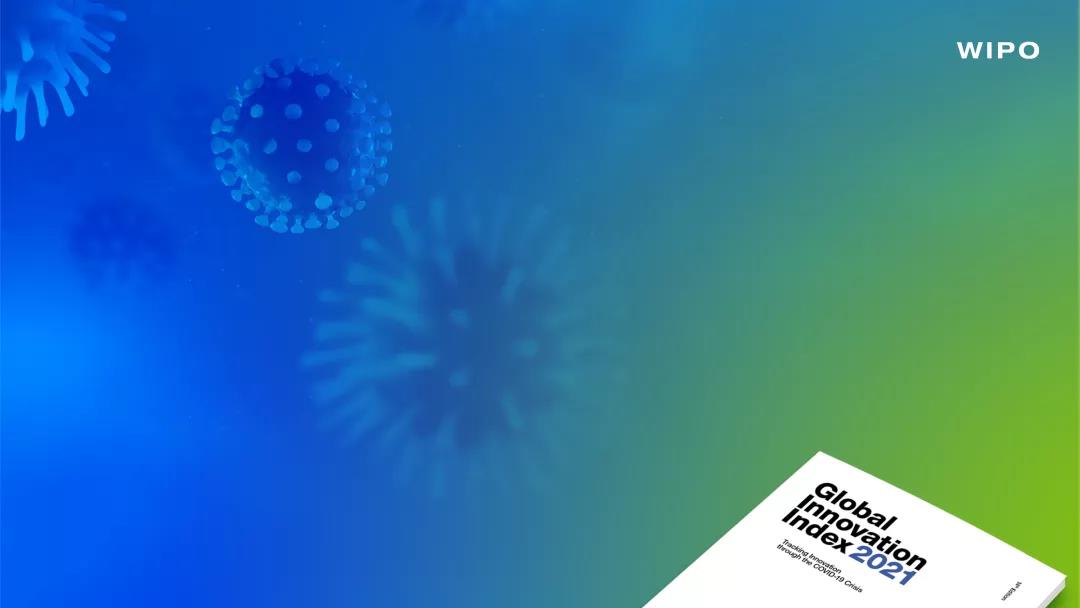
The Global Innovation Index 2021 (GII), in its 14th edition this year, is published by WIPO, in partnership with the Portulans Institute and with the support of our corporate partners: the Brazilian National Confederation of Industry (CNI), Confederation of Indian Industry (CII), Ecopetrol (Colombia), and the Turkish Exporters Assembly (TIM). In 2021, an Academic Network was established to engage world-leading universities in GII research and support the dissemination of GII results within the academic community. Mr. Liang Zhixiang, Senior Vice President of Baidu Group and Mr. Yao Weihao, Director of the Office of Science and Technology Development of Peking University participated and contributed to the research of GII 2021 as Advisory Board members and Academic Network partners, respectively.
Since its inception in 2007, the GII has shaped the innovation measurement agenda and become a cornerstone of economic policymaking, with an increasing number of governments systematically analyzing their annual GII results and designing policy responses to improve their performance. The GII has also been recognized by the UN Economic and Social Council in its 2019 resolution on Science, Technology and Innovation for Development as an authoritative benchmark for measuring innovation in relation to the Sustainable Development Goals (SDGs).
Published annually, the core of the GII provides performance measures and ranks 132 economies on their innovation ecosystems. The Index is built on a rich dataset – the collection of 81 indicators from international public and private sources – going beyond the traditional measures of innovation since the definition of innovation has broadened. It is no longer restricted to research and development (R&D) laboratories and published scientific papers, and rather, is more general and horizontal in nature, including social, business model and technical aspects. For each economy a one-page profile is produced in which that economy’s performance on all indicators is recorded, relative to all other economies in the Index. The economy profiles also highlight an economy’s relative innovation strengths and weaknesses.
The GII 2021 is calculated as the average of two sub-indices. The Innovation Input Sub-Index gauges elements of the economy that enable and facilitate innovative activities and is grouped in five pillars: (1) Institutions, (2) Human capital and research, (3) Infrastructure, (4) Market sophistication, and (5) Business sophistication. The Innovation Output Sub-Index captures the actual result of innovative activities within the economy and is divided in two pillars: (6) Knowledge and technology outputs and (7) Creative outputs.
Source:www.globalinnovationindex.org
Editor:IPRdaily-double
- I also said the two sentence
- Also you can enter 140words

